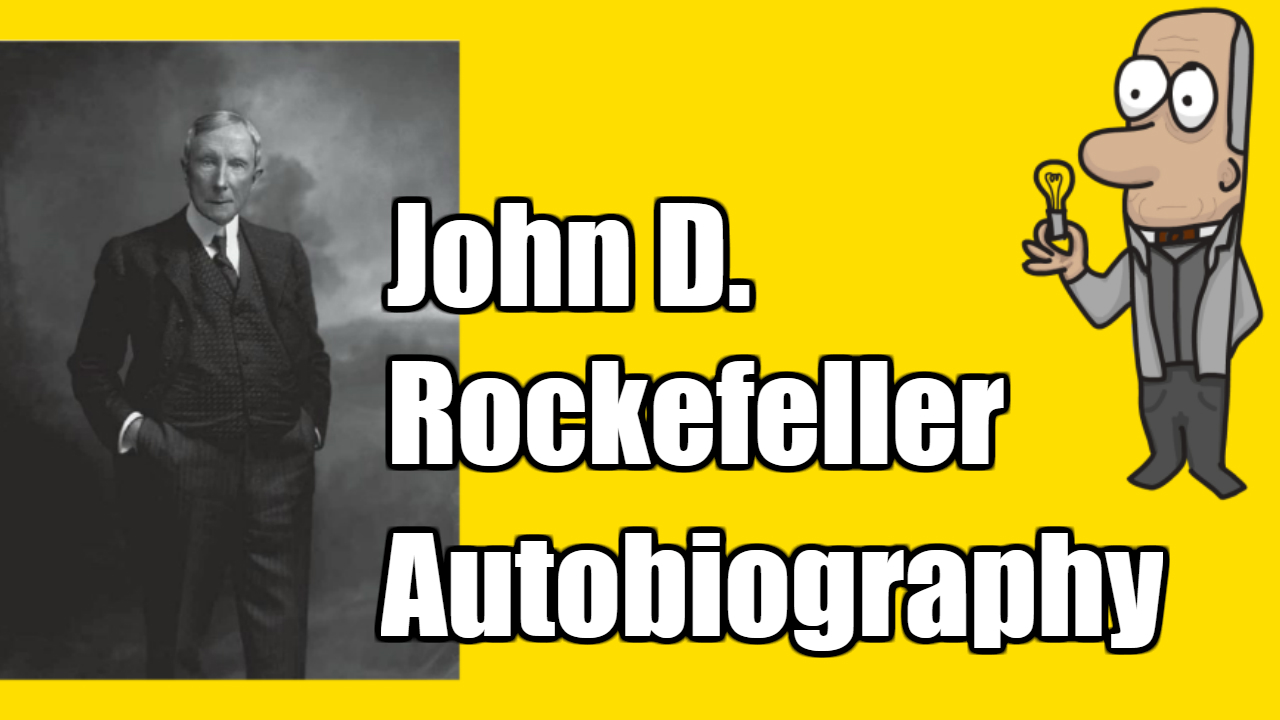Seen by many as the richest person in modern history, John D. Rockefeller made his fortune in the oil business and used his wealth to fund numerous philanthropic causes. His autobiography is a collection of various events and experiences from his life.
Rockefeller learnt the methods and principles of business from his father and he started his first business venture aged 7 or 8 with the help of his mother, looking after turkeys before selling them for profit.
He worked from the age of 16, starting as a bookkeeper in Cleveland before adding auditing accounts to his list of duties. Working for somebody else and the training received as a result, was of great value to him. In his early days in business, he was a large borrower of money which allowed for his business to grow fast. He exalts the value of friendship, as many of his friends either directly lent him money to expand or as some of them were directors of banks, insisted on their bank advancing him the money without hesitation.
At the age of 20, Rockefeller established a business with an English gentleman called Maurice B. Clark. Rockefeller was given a loan from his father (with an interest rate of 10%) which allowed him to contribute $2,000 and become an equal partner in the new business dealing with produce, called Clark & Rockefeller. The amount of trade they were performing soon increased and more money from the bank was required.
After initially looking after the business finances, Rockefeller went out to try and solicit new business. He travelled across two states speaking personally to every person he knew was involved in the same industry of produce consignments. His tactic of not asking for immediate work but just introducing his company worked wonders and resulted in a pile of new business which helped them achieve sales of half a million dollars in their first year.
In the 1860s, Rockefeller began to deal in and refine oil. In 1867 Rockefeller’s newly established firm joined with several other firms, allowing them to unite their skills and finances to maintain their business but at a greater scale, whilst improving efficiency. After yet more partners joined, Rockefeller formed the Standard Oil Company. He acknowledges the success of the company down to constantly expanding the company’s operations and consistently investing in cheaper and more efficient methods of storing and delivering oil.
Utilising economies of scale provided a real advantage over other firms. For example, one of the main risks in the oil business was fire. By having oil plants and refineries distributed across the country, the risk and potential loss from fire was minimised, as no one fire could wipe out and ruin the company.
The Standard Oil Company also negotiated a rebate from the railroads that it used to transport its oil. Each company that used the railroads was charged and then negotiated a rebate in secret. The Standard Oil Company’s bargaining power was strong as it promised large quantities of freight to be transported consistently, providing the railroads with a consistent source of income. This allowed them to significantly reduce their oil transportation costs. The cost of transporting oil was reduced further still with the construction of pipelines.
Rockefeller retired from the hands-on management of the company’s business in the mid-1890s. After disengaging from directly running the company (but still always remaining the majority shareholder), Rockefeller changed his focus to philanthropy. He believed that people should be educated to help themselves and that man should contribute whatever he can, whether it be money or service, to human progress and the advancement of civilisation.
Rockefeller defined civilisation as being made up of the following elements:
- Progress in subsistence (i.e. food-supply, clothing, shelter, sanitation etc.)
- Progress in government and law
- Progress in literature and language
- Progress in science and philosophy
- Progress in art and refinement
- Progress in morality and religion.
All but the first and the last elements can be achieved through higher education and Rockefeller founded universities both in America and abroad. He also used his large fortune to create foundations which affected the fields of education, science and medicine, including eradicating certain diseases.
John D. Rockefeller used ruthlessness and intelligence in business which helped generate a personal wealth at its peak of an estimated $300-400 billion, after being adjusted for inflation. His philanthropy resulted in him giving away in total over $540 million prior to his death in 1937. These figures have seen him considered as the richest person in modern history and the greatest philanthropist in America of all-time.

